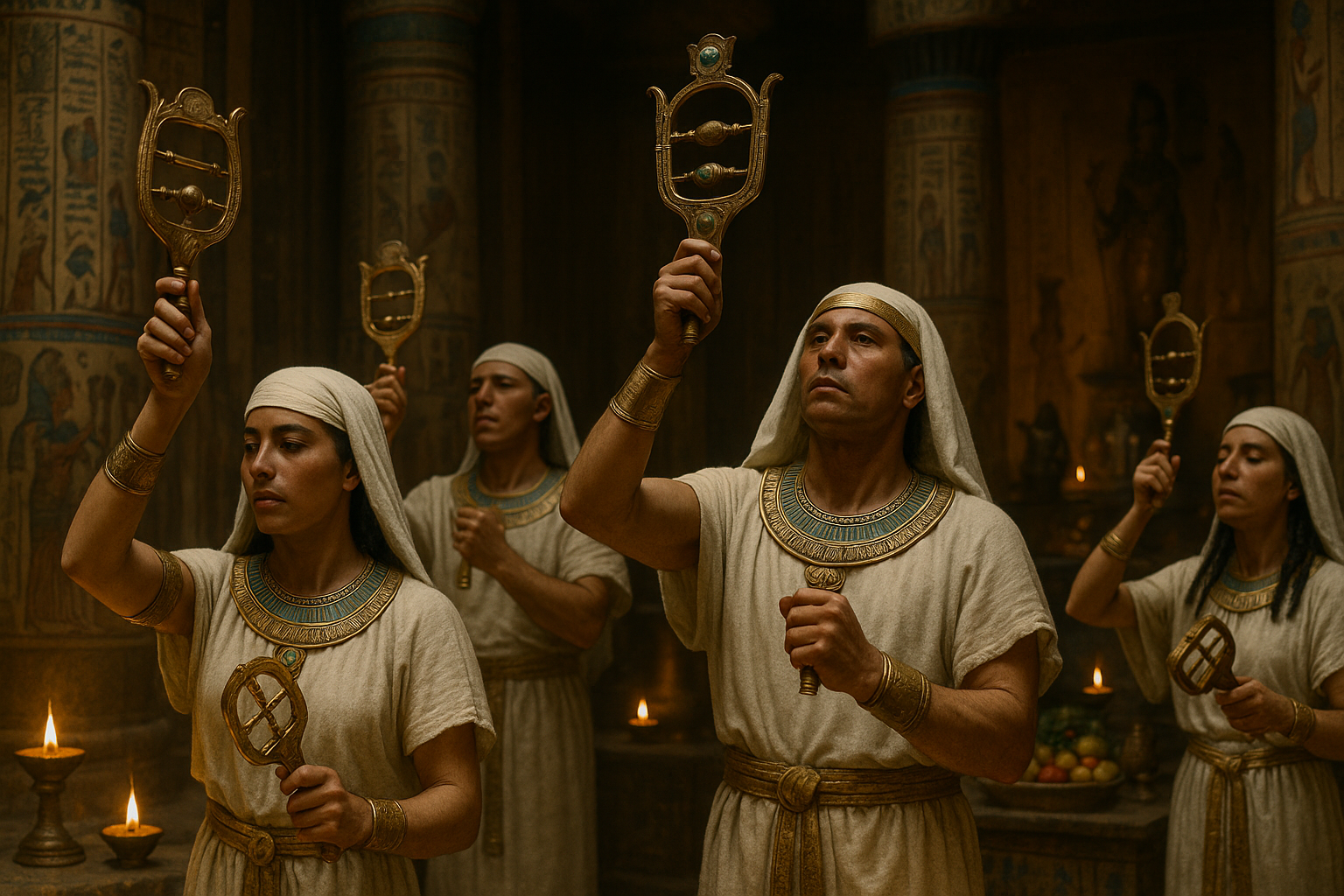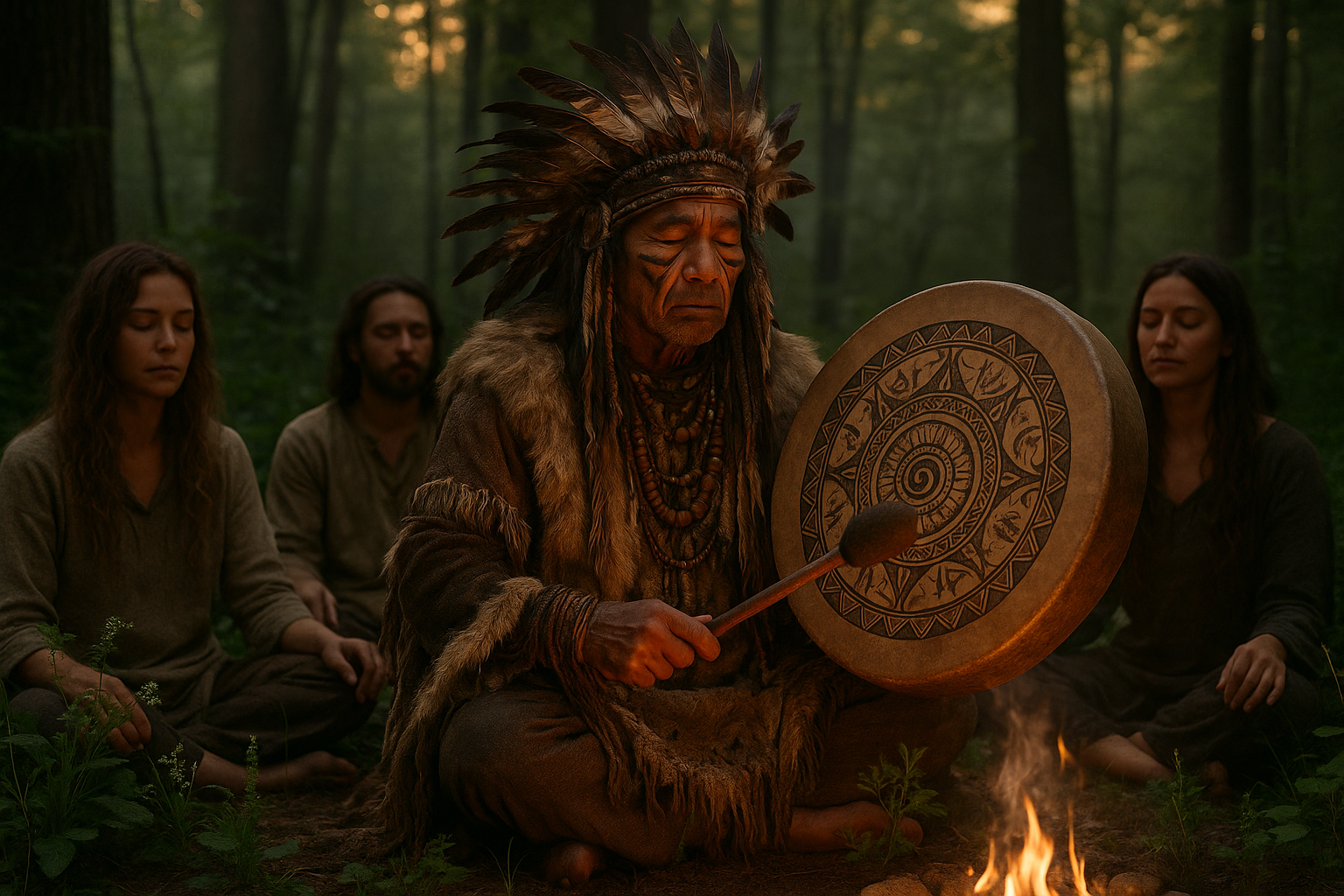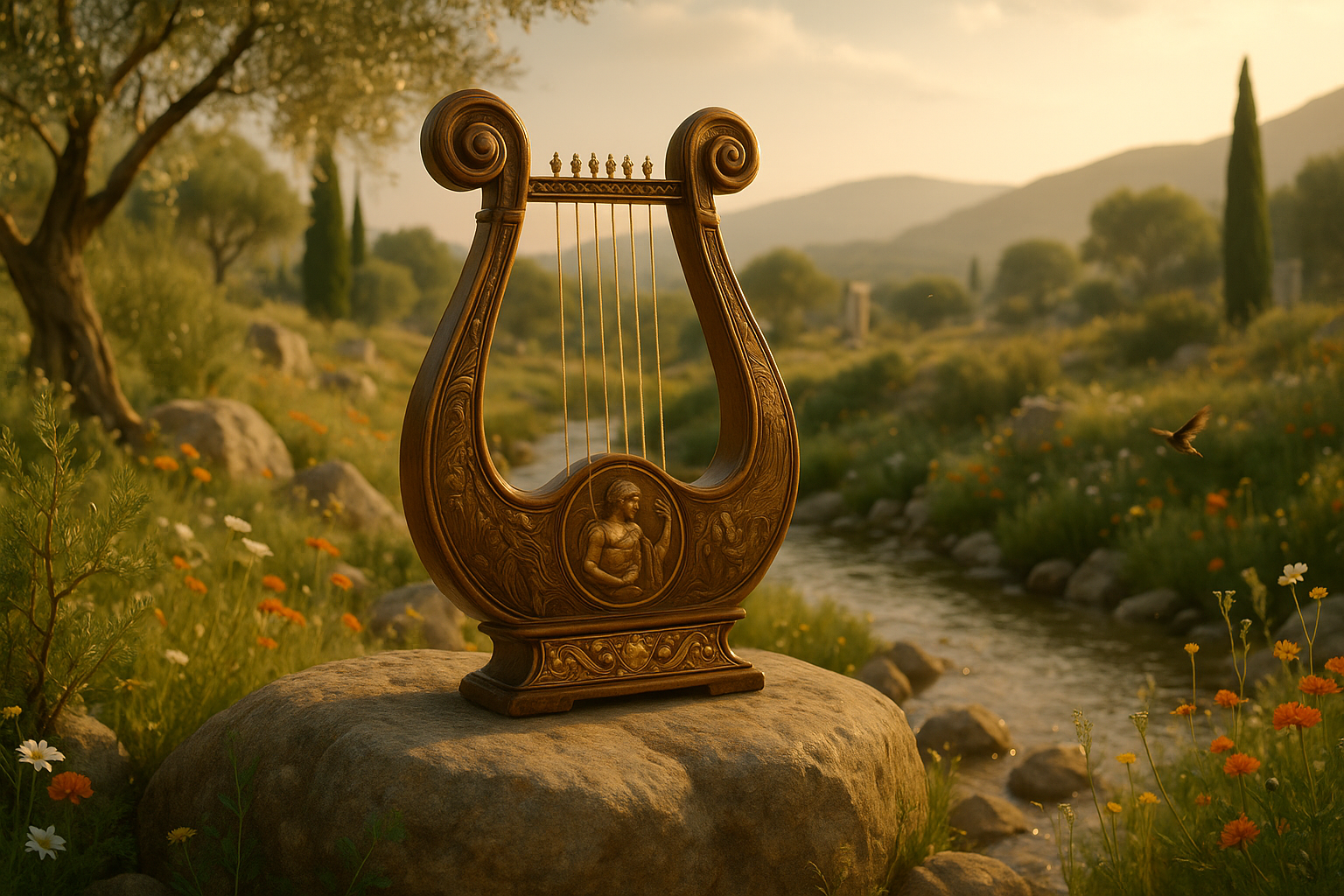In the vast tapestry of human history, certain instruments echo across the ages, telling stories of cultures long past. Among these, the sistrum stands out, a seemingly simple yet profoundly significant instrument from ancient Egypt. This article explores the intricate role of sistrums in Egyptian worship and music, uncovering a world where every shake resonated with divine purpose. 🎶
The sistrum, with its distinctive jangling sound, was much more than a musical instrument. It was a symbol of power, spirituality, and community. This percussive artifact was integral to the rituals and ceremonies dedicated to the gods, particularly Hathor, the goddess of love, beauty, and music. The sistrum’s rhythmic clatter was believed to dispel evil spirits, invoking the divine presence and harmony necessary for sacred rites.
But what exactly made the sistrum so essential to ancient Egyptian worship? And why has it captured the fascination of historians and musicologists alike? To answer these questions, we must delve into the cultural and religious fabric of ancient Egypt. We will explore how the sistrum’s design reflects its divine purpose, examine the roles it played in religious ceremonies, and uncover the influence it wielded over both gods and humans.
In the world of ancient Egypt, where gods walked among men, music was a bridge between the mortal and the divine. The sistrum, with its hypnotic sound, was a crucial part of this bridge. Crafted from materials such as bronze and wood, its U-shaped frame was designed to produce a unique rattling sound that was said to please the gods and purify the air. As we explore the intricacies of its construction, we will see how its physical attributes were meticulously linked to its spiritual functions.
Moving beyond its physical form, we will examine the sistrum’s role in ceremonies. These instruments were wielded by priestesses and priests, central figures in the religious hierarchy, whose performances were essential in maintaining maat, the cosmic order. The repetitive, mesmerizing sound of the sistrum was believed to mimic the divine order of the universe, reinforcing the stability and continuity of life. We’ll uncover how these rituals fostered a deep connection between the worshippers and their deities, enhancing communal bonds and personal piety.
Moreover, the sistrum was more than just a ritualistic tool; it was a cultural icon. It appeared in numerous artistic depictions, from temple carvings to personal amulets, symbolizing protection and divine favor. Through these representations, we gain insights into the socio-religious context of the time, revealing the layers of meaning attributed to this seemingly simple instrument.
In our journey through history, we will also consider the sistrum’s lasting legacy. How has this ancient instrument influenced modern music and culture? Are there echoes of its jingling sound in contemporary practices? By tracing its influence through the ages, we uncover surprising connections that continue to resonate in today’s world. 🌍
As we explore these themes, prepare to be transported to a world where every sound was a step toward the divine. We will navigate through archaeological findings, scholarly interpretations, and artistic depictions, piecing together the sistrum’s multifaceted story. This journey promises not only to illuminate the past but also to enrich our understanding of the powerful role music plays in human culture and spirituality.
Unlocking the secrets of the sistrum is more than an academic pursuit; it is an invitation to experience the awe and wonder that once filled the sacred spaces of ancient Egypt. As we delve into the heart of this ancient world, we invite you to listen closely to the echoes of the past and discover the timeless power of music and worship intertwined. Let’s embark on this fascinating exploration and reveal the enduring mystery and magic of the sistrum. 🔍

Conclusion: Embracing the Resonance of the Past
As we reach the end of our exploration into the profound world of ancient Egyptian worship and music, specifically through the lens of the sistrum, it’s vital to reflect on the key insights we’ve uncovered. The sistrum, a seemingly simple percussion instrument, emerges as a powerful symbol of cultural and religious significance. From its intricate design to its use in sacred ceremonies, the sistrum was more than just a musical tool; it was a conduit for divine connection and societal cohesion.
Throughout this article, we delved into the historical context that gave rise to the sistrum’s prominence. We examined its role in rituals dedicated to deities such as Hathor and Bastet, highlighting the instrument’s ability to bridge the human and divine realms. This connection was not merely symbolic; it was believed to summon divine protection and favor, underscoring the deep spiritual fabric of ancient Egyptian society.
Moreover, we explored the craftsmanship behind the sistrum, noting how its construction from materials like bronze and wood reflects the artisans’ dedication to both function and aesthetic. The sistrum’s distinctive sound, produced by the shaking of its metal disks, was considered to possess purifying properties, dispelling negative energies and inviting harmony.
The exploration of this ancient instrument reminds us of the universal language of music and its timeless ability to unite and inspire. 🎶 The sistrum’s legacy continues to resonate, influencing modern interpretations of music and spirituality. By understanding its historical context, we gain insights into the human quest for meaning and connection, a quest that transcends time and culture.
In a world that often feels disconnected, the story of the sistrum invites us to seek deeper connections with our heritage and with each other. It challenges us to listen to the echoes of the past and find relevance in our contemporary lives.
We encourage you to reflect on the themes discussed here and consider how they might apply to your own experiences. Whether you are a musician, a history enthusiast, or someone curious about ancient cultures, there is much to learn from the rich tapestry of ancient Egyptian traditions.
Please feel free to share your thoughts and insights in the comments below. 🗨️ Engaging in dialogue not only enriches our understanding but also fosters a community of curious minds. If this exploration has inspired you, consider sharing it with others who might also find value in these ancient melodies.
For further reading on this fascinating topic, you can explore [this comprehensive resource](https://www.britannica.com/topic/sistrum) from Britannica. As we continue to unlock the secrets of the past, may we be inspired to create a harmonious future. 🌍
Thank you for joining us on this journey through time. We look forward to hearing your thoughts and continuing the conversation.
—
Let me know if you need any adjustments or additional sections!
Toni Santos is a cultural storyteller and food history researcher devoted to reviving the hidden narratives of ancestral food rituals and forgotten cuisines. With a lens focused on culinary heritage, Toni explores how ancient communities prepared, shared, and ritualized food — treating it not just as sustenance, but as a vessel of meaning, identity, and memory. Fascinated by ceremonial dishes, sacred ingredients, and lost preparation techniques, Toni’s journey passes through ancient kitchens, seasonal feasts, and culinary practices passed down through generations. Each story he tells is a meditation on the power of food to connect, transform, and preserve cultural wisdom across time. Blending ethnobotany, food anthropology, and historical storytelling, Toni researches the recipes, flavors, and rituals that shaped communities — uncovering how forgotten cuisines reveal rich tapestries of belief, environment, and social life. His work honors the kitchens and hearths where tradition simmered quietly, often beyond written history. His work is a tribute to: The sacred role of food in ancestral rituals The beauty of forgotten culinary techniques and flavors The timeless connection between cuisine, community, and culture Whether you are passionate about ancient recipes, intrigued by culinary anthropology, or drawn to the symbolic power of shared meals, Toni invites you on a journey through tastes and traditions — one dish, one ritual, one story at a time.



